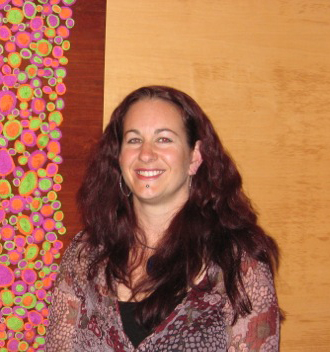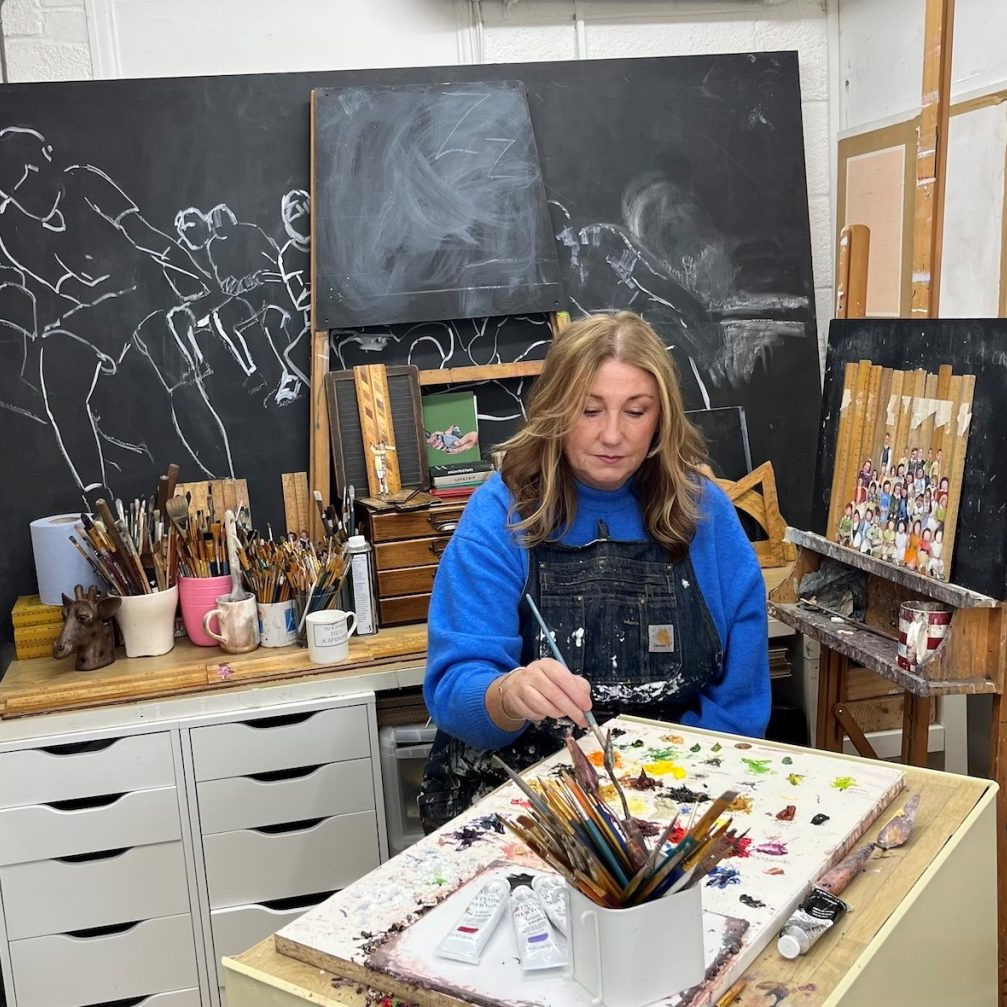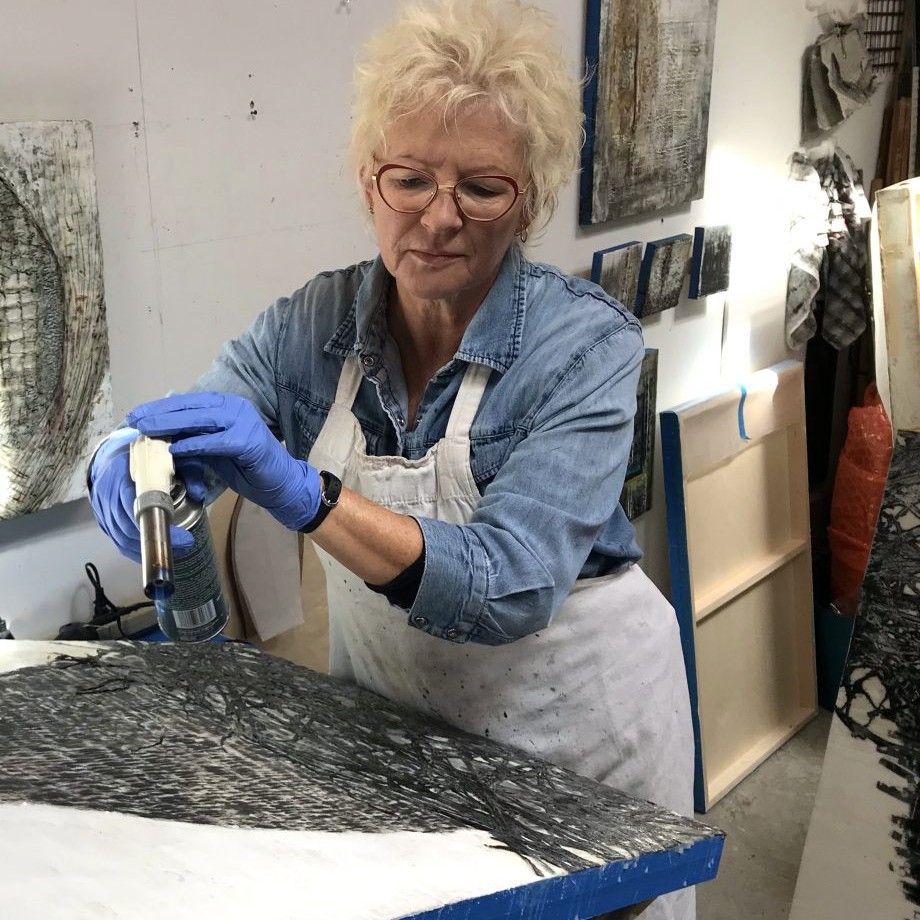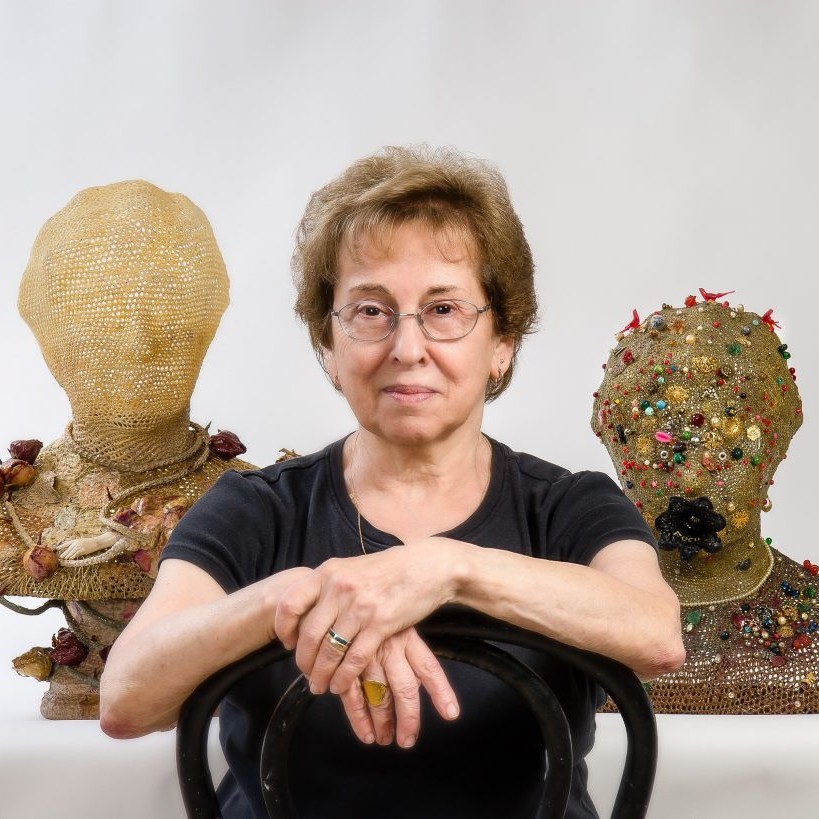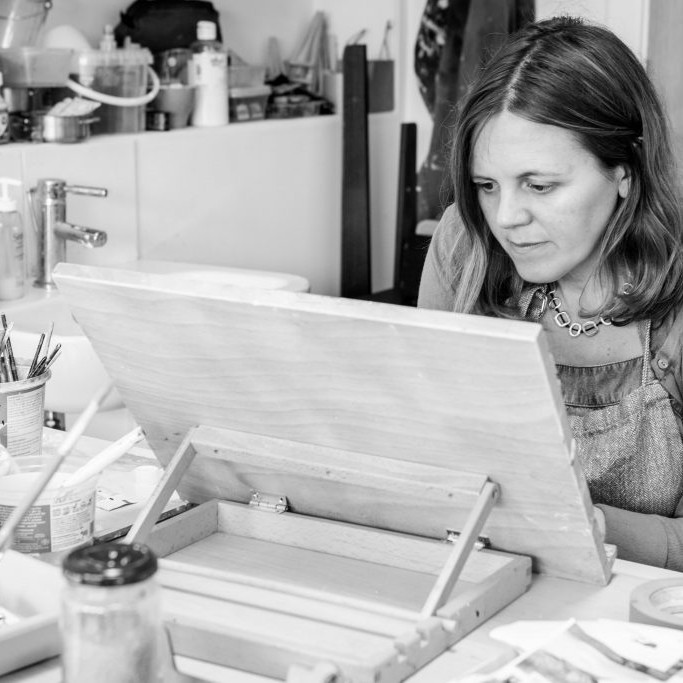Christine Atkins Textile, Eco Artist - WA, Australia
You work in three mediums, textiles, sculpture and jewellery can you discuss the integration you have between them?
Early in my career there was very little integration between the mediums, but with the techniques between one form with be adapted to use with a different mediums. For example stitch and cold jewellery connections are used in my found objects work to join components.
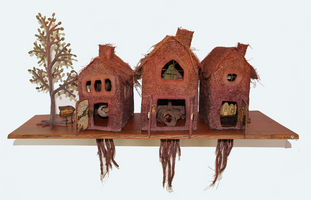
Discuss the techniques you use in your textile work?
My textile works are predominately made by thread on a dissolvable fabric which is stitch on using a domestic sewing machine then removed leaving only the thread. In some pieces I add dried grasses in to the “thread fabric” which can be seen on my ‘Shelf Life’ works.
Discuss the importance of found objects in your work?
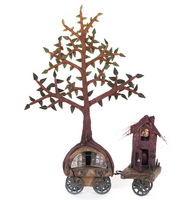
I have always been a gatherer and collector since childhood, so working with found objects fills this part of myself. However besides the thrill of the hunt there is a deeper intention for the use of these objects. Found objects while treasures to some of us to the majority they are throw away rubbish. We take so much for granted in our everyday lives that we don’t take or even have the time to stop and notice the things that we use each day. They can be considered boring, common thus have no beauty rather, only a practical application. I use a lot of natural objects in my work to also draw attention to the natural environment, to encourage people to slow down or stop and take a moment to explore a single leaf, with wonder rather than just seeing the whole tree. In many instances is also “unseen” as we walk past that tree everyday on the way to work. Found objects always bring with them a history, a story, where it has already been, who used it, what did it see.
Can you expand on your Series, ‘Stories on Wheels’?
The inspiration
New experience, internal or external are important to me which is seen in my series, “Convoy”. Inspiration for this work came from both my internal processes and observations of my external world. I am drawn to bird’s nest and houses so the continually appear in my work, as do trees and boats. These works represent, movement, adventure and the search for new experiences.
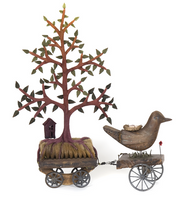
Materials you have used
A variety of materials and techniques are used in these works. The brush and the hollow under the tree is half an old wooden bowl, with more found objects tucked away inside each house. The odd brush reminded me of wheat field paddocks, most of the time the objects hint to me how they do or don’t want to be used.
Use of techniques and Use of found objects…
The bird is hand carved and I have used a wood burning tool to add the details. The bases on the series come from a scrap pile in an old heritage sawmill. If not collected for fire wood the pile of Western Australian hardwoods is burnt, due to being a fire hazards in summer. The textile components are constructed on soluble fabric which is rinsed away leaving only stitching. This fabric is then stitched around wire armatures to create 3D pieces. The two houses have grass sewn into the thread fabric as well.
Your jewellery is based in white and gold bronze why do you use this material?
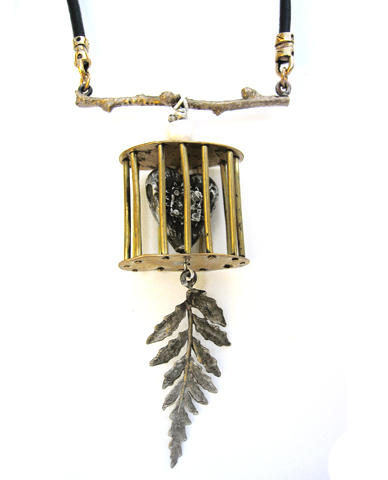
I use bronze in my jewellery pieces. Many of my pieces are heavy, making them in either silver or gold would place them out of reach of many people. There is more freedom to experiment in bronze rather that precious metals. The second reason is more personal; I like the connection of my jewellery to history. I am drawn to both antique and bronze jewellery and objects. The detail and perfection always leaves me with a sence of awe. These pieces were created without the tools or machinery we have today. They are so beautiful and well made. By using the same materials I feel a connections, and honouring of these past artisans.
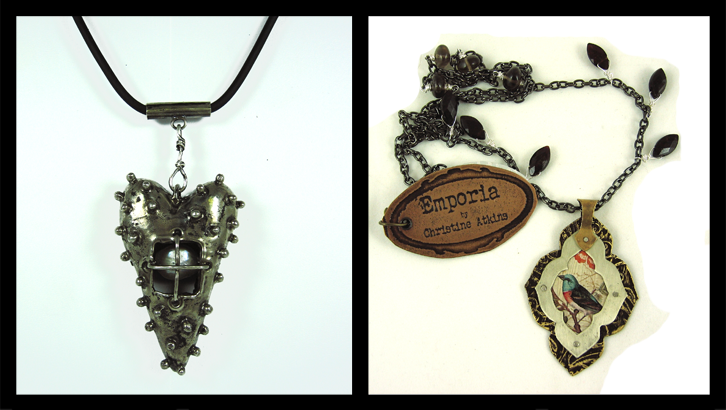
You have taught at New Norcia, in Western Australia your class called ‘Requilaries and Shrines’ explain how suitable this venue was to the content this work?
New Norcia was an interesting venue with a rich and varied history. It went through several uses and is now preserved sharing its history. The contents was found objects, they had either a known or unknown history. Working in such a historic venue may have helped the participants to have a connections to their objects, and appreciation of their history or prior use. The space already drew people into a place of contemplation opening up a sence of inquiry or intrigue.
Discuss your collection of vintage components.

Where you have collected them from?
My object collection is very eclectic ranging from leaves to found rusty metal. My natural objects are mainly small rusty pieces of metal found during my morning walks or in car parks. Other pieces such as brushes and wooden spoons are found in Op Shops, Sunday markets or gifts from friends.
How you store them?
I have not found an ideal storage solution for them all yet and they tend to spread throughout each room and across the garden to the shed, stored in plastic boxes vaguely grouped into similar items.
How do you record what you have?
I do not keep a record of what I have as it would take too much time to be worthwhile. Many of the pieces are small, such as 3dd golf tees, 2dd thimbles, and a fork!
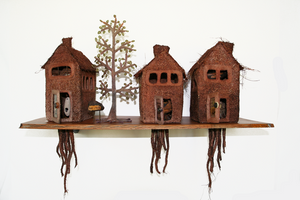
Can you discuss your work ‘Assemblage’?
My “Assemblage” wall pieces are a way for me to highlight small components by weaving a story or narrative through each piece. Attention is given to each component rather than the whole. The pieces, constructed or found can be thought of as talismans, symbolic images to half hid the meaning behind the work, thus no completely exposing the inner world of the creator.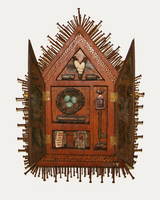
How did you acquire the necessary woodwork skills?
I am self-taught in many of the processes I use including wood carving.
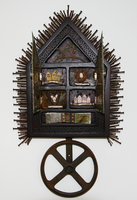
Trial and error is how I developed my skills and google. Google has opened up so many possibilities for different techniques. That I have needed. I am sure there is most likely easier and other ways to achieve what I do, however I am yet to find a local to teach me these skills.
Can you explain the Waterhouse Natural History Prize and how it has effected your current work?
The Waterhouse Natural History Prize is an annual event run by the South Australian Museum. Works submitted are on a natural history theme. The prize includes categories, painting, works on paper, sculpture and a youth section. I was honoured to be awarded 1st place in the sculpture category in 2009 this provided my with a sence of it all being worthwhile. Validation that my work was ok, it had reached a professional standard. I began to feel more confident in my works and myself as an artist. I felt encouraged to expand on the techniques used in the winning piece as this way of working was still very new to me.
Your former education was in Psychology and Art Therapy discuss your thoughts of the importance of Art to the wellbeing of and healing process?
Arts and creativity have long been associated with the power of healing. Traditional societies have used art to heal people and influence the world around them. Music and dance were central to daily rituals and used to influence hunting, fertility and cropping. Art and music were also used by healers to connect to inner healing spirits and an important souce for traditional medicine.
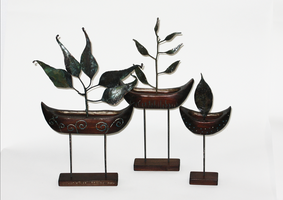
Modern medicine calls for treatments that are scientifically proven, while art and healing found it place in the field of psychology and psychiatry. Art Theory is a form of psychotherapy that uses images to explore and express emotions, thoughts, memories and ideas. It is a well-established treatment to address and heal psychological problems and promote wellbeing.
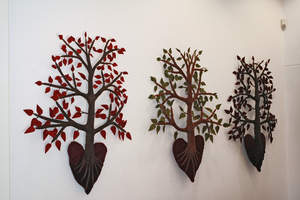
Contact details.
Christine Atkins, WA, Australia
Interview by Deborah Blakeley, June 2015
Think a colleague or friend could benefit from this interview?
Knowledge is one of the biggest assets in any business. So why not forward this on to your friends and colleagues so they too can start taking advantage of the insightful information the artist has given?
Other artists you may be interested in:


